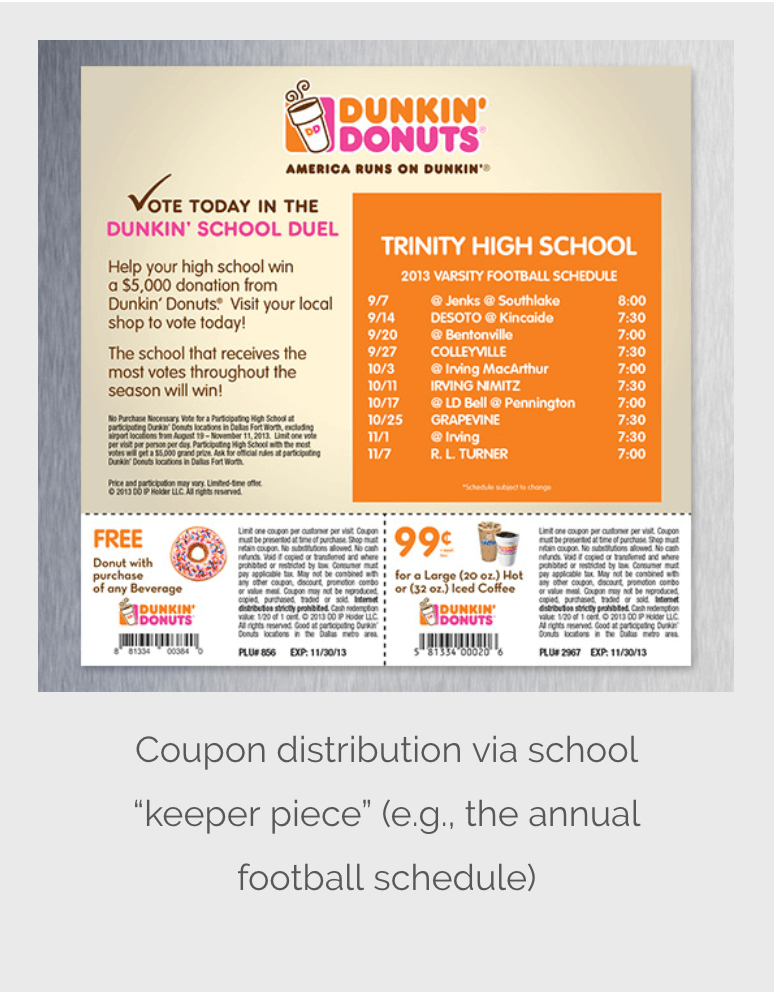Analog can scale too: What tech developments bring to local (non-ad tech) marketing
When you think local marketing, your mobile or local search may come to mind, but contributor Megan Hannay shares how technology is scaling more traditional methods of outreach.

These developments have enabled national brands to target customers based on their locations and buying patterns. But programmatic marketing is becoming such a standard go-to for scaling local campaigns that I believe brands are missing out on other less traditional opportunities to connect with local audiences.
There are a few brands that have built out well-recognized and scaled local programs with their own internal resources. Red Bull, for example, sends pairs of branding associates to events, college campuses and Main Streets across the US, with nothing more than a cute car and free samples. Both Uber and Lyft hire individual city managers for new cities to build their organic local presence at events. Building out a local team takes considerable effort and coordination — a campaign that many enterprise brands may shy away from.
But there are other options.
Full disclosure: I’m clearly biased since I work for a company dedicated to scaling local marketing via sponsorships. But we’re not the only company working to scale local offline marketing. Progress in this niche of local has been slower than in others — coordinating boots on the ground is always a tedious process — but there are signs that this industry is only going to grow.
How tech changes the local marketing scene
As we’ve seen internally, some of the same practices that enabled ad tech to take off can be used to corral other types of local campaigns.
Tech enables shifts in three primary areas that support scaled local offline marketing:
- Scaled outreach: Whether via automatic emails in tools like Buzzstream or even email newsletter databases, it’s possible to reach out to and coordinate with large numbers of people without pouring too many resources into initial contact.
- Simplified data management: Customer relationship management systems like Hubspot are one example here; automation simplifies and expedites the detail-oriented aspects of relationship building, allowing people to focus more on creative brainstorming and team management.
- Coordinated distribution of assets: In the days of print ads and newspapers, asset coordination and distribution meant months of planning and little room for change or error; physical copies of ads were shipped to specific locations around the world. While this is still often the case, we’re increasingly entering a time when visual assets, such as flyers or ads, can be transmitted digitally. And I foresee the wide adoption of 3D printers affecting this area as well. Why ship tchotchkes when a local team member can make them on-site?
So who’s scaling local analog marketing?
Though I’m using the term “analog” to mean, non-ad tech-centered efforts, you’ll see that all three of the examples below do use digital solutions to some extent. (Note: Neither my employer nor I have relationships with any of the companies I’ll mention below.)
Field Day
Field Day Marketing describes itself as the Uber of grassroots marketing. The startup hires local community members to act as brand ambassadors for a particular client campaign, whether it be representing a brand at an event or bringing flyers door-to-door.
This allows brands to curate a local presence in any city, without the stress of coordinating their own team.
I spoke with Alex Nocifera, CEO of Field Day, who says he envisions his clients using Field Day similarly to the way they do programmatic ad buying.
“[Field Day is] very like programming an ad, but just doing it with people,” Nocifera said. “You would schedule someone at this time, just like a geo-fenced ad, and at this place, and then you have to put together some creative.”
Home Team Marketing
Home Team Marketing exemplifies the scaled outreach and data management components of offline marketing. Partnered with more than 11,000 high schools across the US, this startup develops online and offline media campaigns, which advertise to high school students and bring additional funds into the schools.
From sporting event flyers to football field billboards, Home Team brings national brands, such as Dunkin’ Donuts and Walmart, to local high schools, with custom ads.
Vistar Media
Inhabiting the space between digital and offline is Vistar Media. This startup works to populate digital billboard, kiosk and bus stop ad space with client assets, using information gathered from consumer location trends.
In other words, they employ cell phone technology to understand the demographics of people who pass by a certain offline ad location, enabling them to place the optimal ad in front of the sought-after audience.
Of all of my examples, this comes closest to traditional ad tech, without the click-to-convert component.
Will offline be the next frontier in local ad tech?
Online marketing works. But it’s not the only way to do local well. Brands could stand to explore more offline options for local. Field Day’s Nocifera said he helps brands see this opportunity.
“That’s what we’re trying to diversify,” he said. “I believe you need some SEO, you need some display, you need some social, and I would also strongly suggest you sprinkle some grassroots on top of it all.”
Opinions expressed in this article are those of the guest author and not necessarily MarTech. Staff authors are listed here.
Related stories
